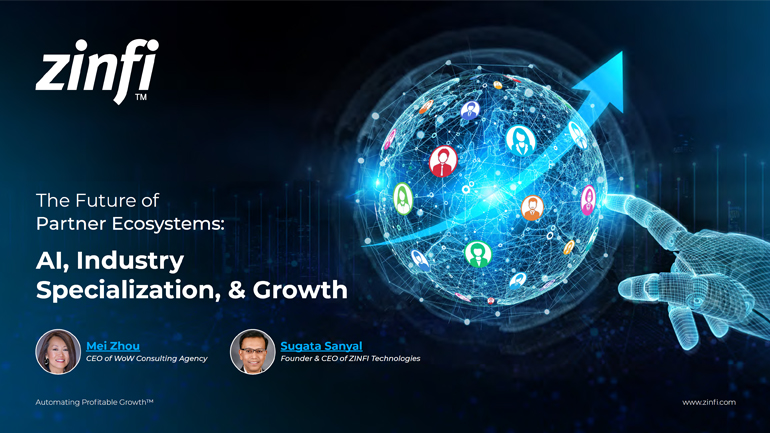Glossary - How to - Sustainable Ecosystem Management
How to Implement Sustainable Ecosystem Management?
Introduction
Understanding Sustainable Ecosystem Management
Sustainable ecosystem management refers to the responsible use and conservation of natural resources to maintain ecological balance while fulfilling human needs. This approach prioritizes biodiversity conservation, resource efficiency, and long-term ecological health. With increasing environmental concerns such as climate change, deforestation, and biodiversity loss, sustainable ecosystem management is critical in ensuring that ecosystems remain resilient and productive for future generations.
Organizations and governments worldwide have recognized the necessity of sustainable practices in industries such as agriculture, forestry, and urban development. Through effective planning and execution, sustainable ecosystem management helps balance environmental, economic, and social needs while minimizing ecological degradation.
The Role of Partner Relationship Management (PRM) in Sustainable Ecosystem Management
Incorporating sustainable ecosystem management within partner relationship management (PRM) strategies is essential for organizations involved in conservation, sustainable supply chains, and environmental governance. PRM enables collaboration among stakeholders, including governments, businesses, and NGOs, to ensure conservation goals align with corporate and economic objectives. Effective PRM solutions facilitate data-sharing, resource management, and strategic partnerships, enhancing the efficiency and accountability of sustainability efforts.
Key Takeaways:
Establishing Clear Sustainability Goals:
Organizations must define clear environmental, social, and economic objectives to achieve sustainable ecosystem management, aligning with international sustainability frameworks such as the United Nations Sustainable Development Goals (SDGs) and the Convention on Biological Diversity (CBD).
Companies should implement environmental policies that address carbon footprint reduction, habitat restoration, and sustainable resource utilization. Setting measurable targets and tracking progress ensures continuous improvement and accountability in sustainability initiatives.
Integrating Technology for Resource Monitoring:
Organizations must define clear environmental, social, and economic objectives to achieve sustainable ecosystem management, aligning with international sustainability frameworks such as the United Nations Sustainable Development Goals (SDGs) and the Convention on Biological Diversity (CBD).
For example, satellite imagery can track deforestation patterns, while AI-powered analytics can identify ecological risks. Implementing these technologies supports proactive conservation strategies and mitigates environmental degradation.
Strengthening Multi-Stakeholder Collaboration:
Sustainable ecosystem management requires collaboration among stakeholders, including government agencies, private companies, non-profits, and local communities. Establishing transparent communication channels aligns parties toward achieving sustainability goals.
Partnerships with research institutions and environmental organizations enhance knowledge-sharing and resource mobilization. Corporate entities can also engage in Corporate Social Responsibility (CSR) initiatives to support environmental conservation efforts.
Implementing Sustainable Supply Chain Practices:
A sustainable supply chain minimizes adverse environmental impacts by ensuring that raw material sourcing, production, and distribution processes adhere to eco-friendly practices. Organizations can achieve this by adopting circular economy principles, reducing waste, and promoting renewable energy usage.
Businesses should also work with suppliers regarding ethical and sustainable practices. Certifications such as Fair Trade, Rainforest Alliance, and FSC (Forest Stewardship Council) help verify the sustainability of supply chain operations.
Enhancing Community Involvement and Education:
Community engagement is vital in sustainable ecosystem management since environmental policies directly affect local populations. Educating communities about conservation practices fosters a culture of sustainability and encourages participation in ecological preservation efforts.
Sustainable farming initiatives, reforestation projects, and wildlife conservation workshops empower communities to contribute to sustainability. Governments and organizations should also provide incentives for adopting sustainable practices.
Summary of Key Takeaways:
- Define clear sustainability objectives aligned with global frameworks.
- Utilize technology for real-time ecosystem monitoring.
- Foster collaboration among stakeholders for effective resource management.
- Implement eco-friendly supply chain practices.
- Engage and educate local communities to enhance conservation efforts.
Key Examples:
- Automotive Manufacturing: Automakers are integrating sustainable ecosystem management by reducing carbon emissions, utilizing recycled materials, and adopting energy-efficient manufacturing processes. Companies like Tesla and Toyota invest in renewable energy and electric vehicle production to minimize environmental impact.
- Consumer Electronics: Tech companies focus on sustainable materials, reducing electronic waste, and promoting recycling initiatives. Apple, for instance, has committed to using 100% recycled aluminum in its products and improving energy efficiency in its supply chain.
- Energy Production: The energy sector is transitioning to renewable sources such as solar, wind, and hydroelectric power. Companies are also investing in carbon capture and storage (CCS) technologies to mitigate the environmental impact of fossil fuel consumption.
- Financial Services: Banks and investment firms are adopting green financing initiatives to support environmentally responsible projects. Sustainable investments prioritize companies with advanced environmental, social, and governance (ESG) performance.
- Food and Beverage: Some key focus areas in this industry include sustainable agriculture, responsible sourcing, and waste reduction. Nestlé and Unilever are implementing water conservation strategies and reducing plastic packaging waste.
- Healthcare Services: Hospitals and healthcare providers are reducing medical waste, improving energy efficiency, and adopting sustainable procurement practices to minimize their ecological footprint.
- Information Technology: Tech firms are improving data center efficiency, reducing electronic waste, and promoting carbon-neutral cloud computing solutions. Google and Microsoft are leading in adopting renewable energy for their global operations.
- Pharmaceutical Development: Pharmaceutical companies invest in eco-friendly production processes, minimizing chemical waste and ensuring ethical sourcing of raw materials to enhance sustainability in drug development.
- Retail Industry: Retailers are adopting green packaging, promoting ethical sourcing, and reducing energy consumption. Brands like Patagonia emphasize environmental responsibility in their supply chain and manufacturing processes.
- Telecommunications: Telecom companies focus on energy-efficient network infrastructure, reducing e-waste, and integrating renewable energy solutions to minimize environmental impact.
Conclusion:
Sustainable ecosystem management is essential in maintaining ecological balance and ensuring resource availability. Organizations significantly impact environmental conservation by implementing clear sustainability goals, leveraging technology, fostering collaboration, optimizing supply chains, and engaging communities.
Businesses across various industries are integrating sustainability into their operations, demonstrating that economic growth and environmental responsibility can coexist. Through effective PRM strategies, stakeholders can work together to implement sustainable ecosystem management practices that benefit society and the environment.
Associated Keywords:
- Environmental Resource Management
- Sustainable Land Use Planning
- Biodiversity Conservation Strategies















